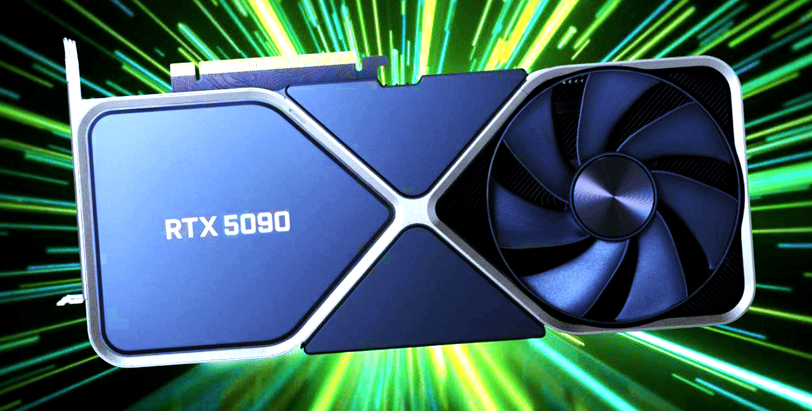NVIDIA GeForce RTX 5090: Specs and Features Explained
The NVIDIA GeForce RTX 5090 marks a significant evolution in the line of graphics cards that has consistently pushed the boundaries of graphical performance.
TECH REVIEWS
Ashton piers
1/26/20254 min read


The NVIDIA GeForce RTX 5090 represents a significant leap forward in the realm of graphics processing units (GPUs), particularly within the gaming and artificial intelligence landscapes. As the latest addition to NVIDIA's prestigious lineup, the RTX 5090 is designed to elevate both performance and efficiency, catering to the demands of high-end gamers and AI developers alike. The underlying architecture, known as Blackwell, is pivotal to this advancement, providing improvements in processing power and energy efficiency that align with current trends in computing.
Blackwell architecture incorporates cutting-edge innovations that allow the RTX 5090 to deliver enhanced visual fidelity and frame rates in gaming scenarios, while also facilitating complex calculations essential for AI applications. With the increasing relevance of AI in gaming—such as procedural content generation and advanced NPC behaviors—the significance of a powerful GPU cannot be overstated. The RTX 5090 is finely tuned to meet the needs of various high-performance computing tasks, allowing it to handle both graphics rendering and parallel computing workloads without compromise.
As gaming becomes increasingly immersive, with ever-more demanding titles requiring substantial graphical capabilities, the RTX 5090 aims to provide a solution that not only meets but exceeds these challenges. Furthermore, its capabilities are not exclusively limited to gaming; the card is poised to support a variety of other applications, such as virtual reality, real-time ray tracing, and machine learning. By embracing trends in technology and user experience, NVIDIA has engineered the RTX 5090 to be a versatile workhorse that promises to redefine expectations in gaming and professional environments.
Key Specifications of the RTX 5090
The NVIDIA GeForce RTX 5090 marks a significant evolution in the line of graphics cards that has consistently pushed the boundaries of graphical performance. At its core, the RTX 5090 is equipped with advanced specifications that enhance its functionalities in various applications, especially in gaming and high-performance computing. The card boasts an impressive 128 streaming multiprocessors (SMS), resulting in increased parallel processing capabilities and a smoother gaming experience across diverse scenarios.
One of the primary features of the RTX 5090 is its CUDA core count, which has been raised substantially to 22,000. This impressive increase represents a 32% uplift when compared to its predecessor, the RTX 4090, which possessed 16,640 CUDA cores. The augmentation in the number of CUDA cores allows for improved shader calculations and enhanced texture processing, which can significantly impact visual fidelity and frame rates in demanding games and applications.
In addition to the SMS and CUDA cores, the graphics processing clusters (GPCs) of the RTX 5090 have also received upgrades. The new design includes a total of 7 GPCs, which provide an extensive level of parallel processing that optimally supports modern graphics-rendering tasks. This enhancement not only translates into higher performance but also improves power efficiency, contributing to lower thermal outputs even under heavy loads.
With these advances, users can expect the RTX 5090 to deliver an unparalleled experience in real-time ray tracing and artificial intelligence-driven tasks. The increased tensor cores and ray-tracing capabilities further bolster the card’s performance in contemporary gaming titles. Consequently, the RTX 5090 is poised to redefine the standards of graphics performance, ensuring that gamers and developers alike encounter remarkable improvements in both gameplay and graphics-intensive applications.
Performance Analysis
The NVIDIA GeForce RTX 5090 represents a significant leap forward in graphics processing performance, setting a new standard for both gaming and computational tasks. Equipped with advanced architecture, the RTX 5090 is designed to handle demanding gaming scenarios with remarkable efficiency. Benchmarks have demonstrated its superiority over previous generations and rival high-end GPUs in several key areas. For instance, in 4K gaming, it routinely delivers frame rates exceeding 120 FPS, providing an exceptionally smooth experience that caters to both casual and competitive gamers.
One of the standout features of the RTX 5090 is its enhanced ray tracing capabilities, which enable realistic lighting, shadows, and reflections in games that support this technology. This not only elevates the visual fidelity but also shows how the GPU can manage demanding graphics workloads without significant performance dips. In comparison with its predecessors, the 5090 exhibits improvements in power efficiency and thermals, allowing for prolonged gaming sessions without overheating issues. Additionally, its DLSS 3.0 technology further enhances frame rates in supported titles, indicating the RTX 5090's well-rounded capabilities.
Beyond gaming, the RTX 5090 excels in artificial intelligence workloads and data processing tasks, showcasing its versatility. With its massive core count and improved memory bandwidth, it is particularly effective for tasks such as deep learning, 3D rendering, and complex simulations. Industry benchmarks indicate that it outperforms many dedicated AI processing units, reinforcing its position as a powerful tool for professionals in various fields. Overall, the NVIDIA GeForce RTX 5090 not only meets but exceeds expectations for a high-performance graphics card, solidifying its status as a top choice for gamers and professionals alike.
Implications for Gamers and Developers
The introduction of the NVIDIA GeForce RTX 5090 GPU is set to have profound implications for both gamers and developers, reshaping gaming environments and the broader landscape of game development. With enhanced specifications such as increased core counts, improved ray tracing capabilities, and memory bandwidth, the RTX 5090 offers the potential for vastly improved graphical fidelity and performance. Gamers can expect ultra-high-definition (UHD) experiences at higher frame rates, even in the most demanding titles, significantly enhancing their gaming journey.
For developers, the RTX 5090 represents a formidable tool in the creation of more intricate and visually stunning game worlds. The texture and lighting improvements facilitated by real-time ray tracing capabilities allow developers to push visual boundaries further than ever before. Moreover, the introduction of advanced AI algorithms integrated within the GPU can streamline processes such as animation and procedural content generation, making it easier for developers to create immersive experiences without sacrificing performance.
As gaming environments become increasingly sophisticated, the necessity for future-proofing becomes paramount. The GPU's cutting-edge features mean that gamers investing in an RTX 5090 may find themselves well-prepared for upcoming titles demanding higher processing power. This adaptability not only benefits individual gamers but also encourages developers to experiment with new technologies and tools, knowing that a sizable portion of their audience will have the capacity to handle the latest advancements.
Finally, the implications of the RTX 5090 extend beyond gaming. The enhanced computational capabilities open pathways for the use of the GPU in AI applications, allowing developers to explore novel gameplay mechanics and enhanced user interactions, ultimately influencing the overall design and experience of future games. The NVIDIA GeForce RTX 5090 is more than just a graphics card; it represents a significant leap forward that will likely shape the future of gaming and development for years to come.
